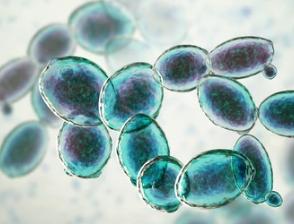Metabolic flux analysis (MFA) with stable isotope tracers (typically a 13C-labeled carbon source) allows intracellular fluxes to be quantified in a wide range of organisms. The current approaches rely on isotopic models to simulate tracer propagation through metabolic networks under (pseudo-) steady-state conditions and fluxes are then estimated by fitting the experimental concentrations and isotopic profiles of metabolites. Based on multiple measurement tools and strong technical capabilities and expertise, Creative Proteomics is able to provide yeast MFA services. Yeast FMA is a technique used to measure and quantify metabolic activities in yeast cells. Our services are reliable, customized, and flexible, which can greatly advance the progress of your project.

Overview of yeast MFA
Yeasts have always been an important cell factory for the production of bread, beer, and wine. In recent years, some yeasts have also been used more as cell factories for the production of many different fuels, chemicals, food ingredients and drugs. In addition, yeast genomes are relatively small, relatively simple to regulate, and have excellent research infrastructure, such as yeast genome databases, as well as gene deletion and overexpression libraries, thus yeasts are also a very important model organism for the study of eukaryotes, which is important for the treatment of human diseases, among others. To date, yeast MFA has been applied to analyze a variety of conditions and factors and their effects on yeast cell metabolism. Among them, Saccharomyces cerevisiae represents the most extensively studied fungal organism concerning MFA.
Yeast MFA service at Creative Proteomics
Creative Proteomics is designed to expand the availability of metabolic flux analysis services to investigators in various applications. Understanding the intracellular metabolic fluxes of fungi is highly relevant for better understanding and rational design of potential metabolism. To quantify the intracellular flux of yeast, we usually apply different 13C tracers embedded in the framework of experimental design, conduct isotope labeling analysis by nuclear magnetic resonance (NMR), gas chromatography-mass spectrometry (GC-MS) and liquid chromatography-mass spectrometry (LC-MS) techniques, and perform model-based data processing.
We focus on Saccharomyces cerevisiae, which is known as a eukaryotic model microorganism for the biosynthesis of high-value metabolites with complicated structures. In addition, we also support MFA analysis for other yeasts and filamentous fungi.
Our services can help researchers and professionals to measure the concentrations of metabolites, fluxes of biochemical pathways, and characterize the metabolic network of yeast cells. Specifically, our yeast MFA services include,
- The determination of metabolite concentrations
- The measurement of intracellular fluxes
- The analysis of enzyme kinetics
- The construction of metabolic models
Applications of our service
The application of yeast MFA is useful for the study of yeast metabolic networks, and it can help researchers to better understand the metabolic regulation and optimization of yeast cells, as well as to identify potential targets for metabolic engineering.
Our MFA service is supported by the latest knowledge in biology, bioinformatics and advanced software. If you are interested in yeast MFA analysis, please contact us and one of our professional experts will provide you with further knowledge or consulting services.
Reference
- Niklas, Jens, Konstantin Schneider, and Elmar Heinzle. "Metabolic flux analysis in eukaryotes." Current opinion in biotechnology 21.1 (2010): 63-69.